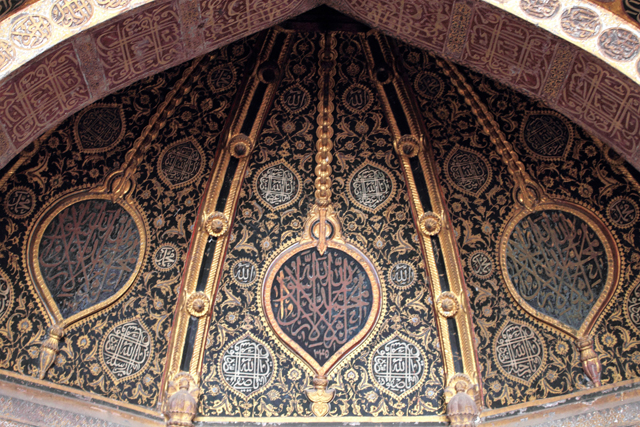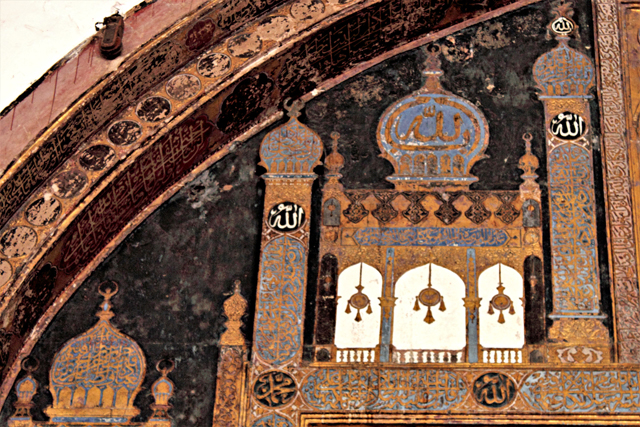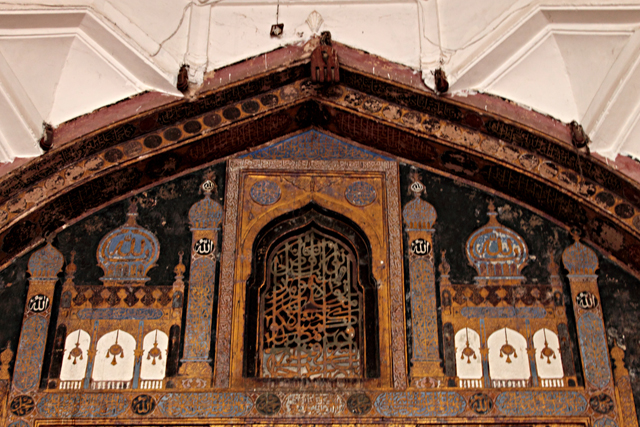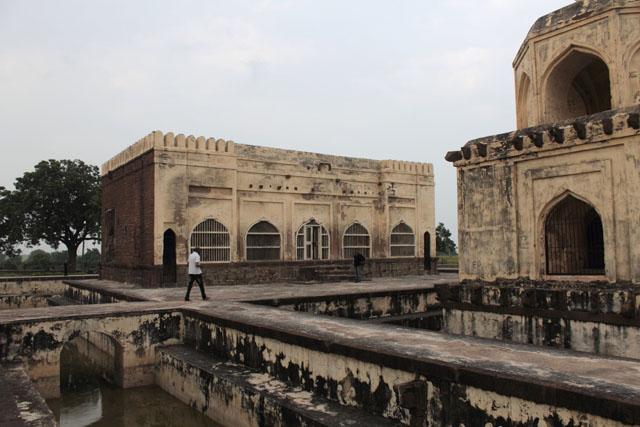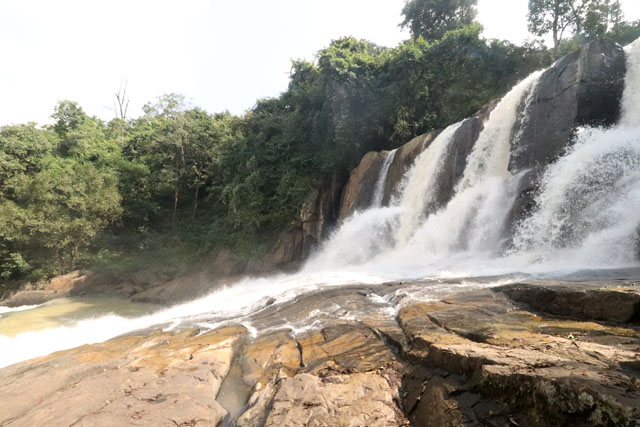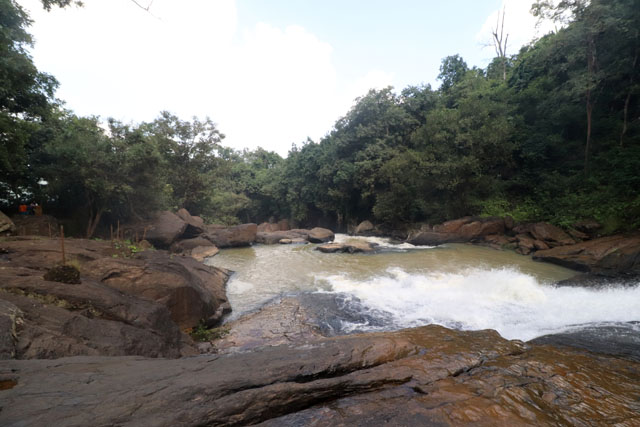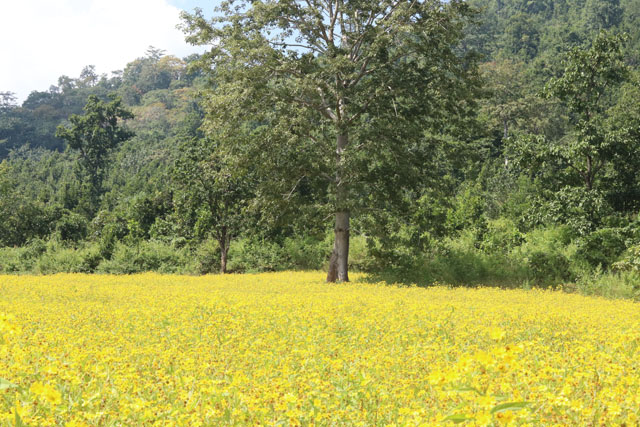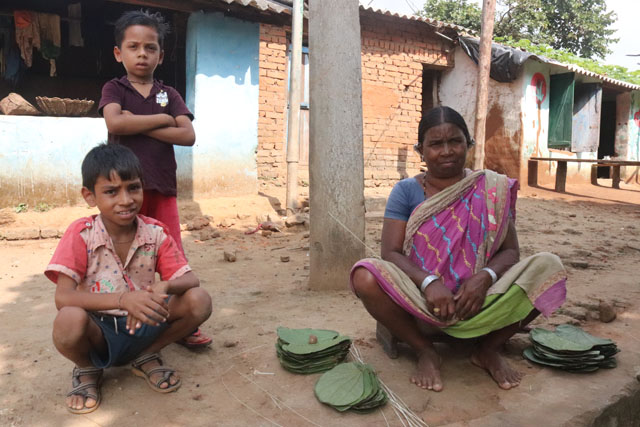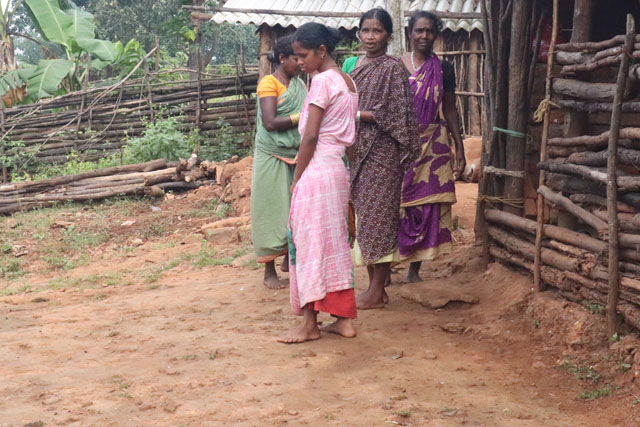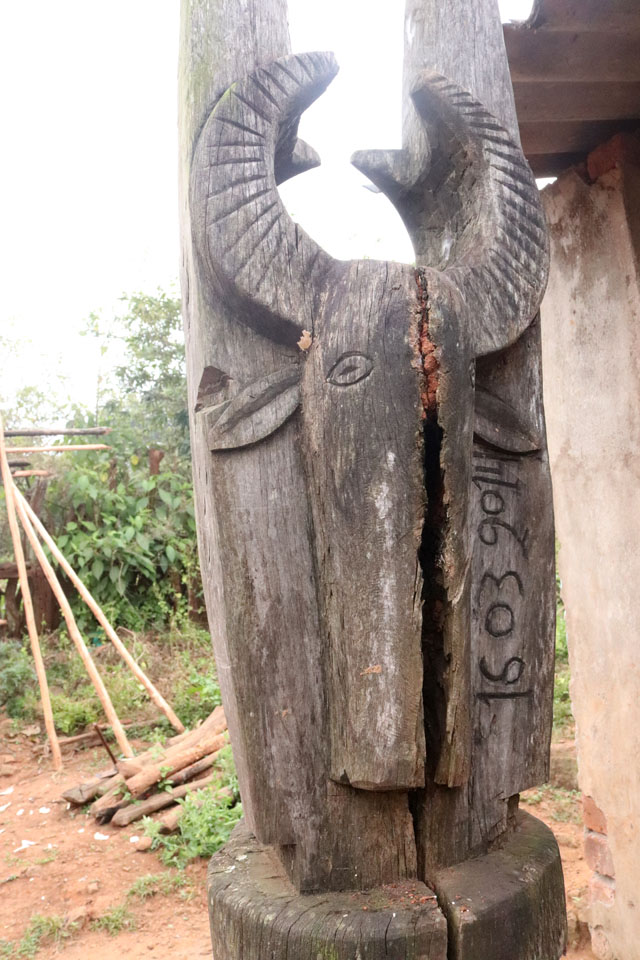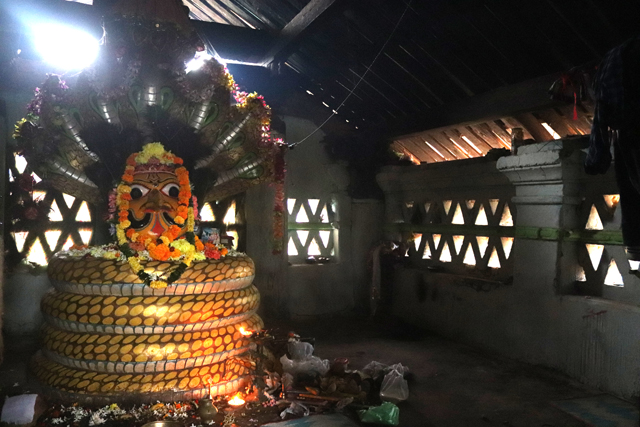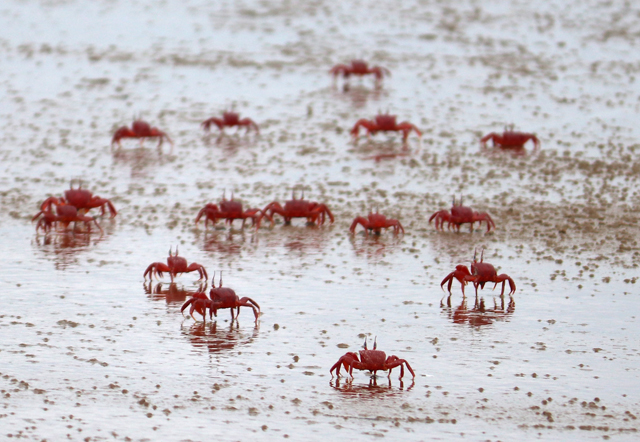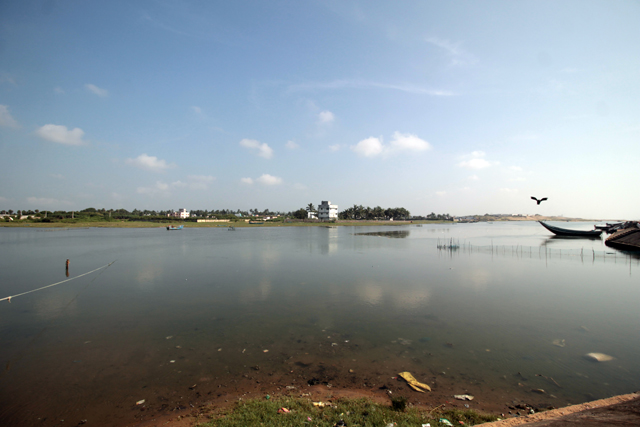‘That slender one should send a letter
Couched in artistic language
Written on a Kettaki leaf, scratched by Kasturi and wrapped by a silken thread
Having a symbol of her breasts smeared with sandal paste
With her name inscribed on upper portion’

‘Forgetful of worldly attachments
Lost in his thoughts
Suffering from fever caused by his memory
She heaves deep sighs, neglects her food, walks or rest
Without bothering to listen to her friends’

‘High palaces and blossoming lotuses
Do not give the pleasure any more
She throws the ornaments being placed on her body by her friends
Nor is she delighted by acts of entertainment
Having achieved an objective she is restless
Is desirous of engaging in such pursuits
Which she could not in the presence of her lover’

The 18th-century Chitrasala of Bundi palace in Southeastern Rajasthan is a chock-a-block of romantic depictions of Shringar Rasa in the form of large murals. Most of Chitrasala murals are inspired by Rasikapriya, a love poem written by Keshavdash of the 16th century.

Bundi takes its name from a narrow valley Bandu – Ka – Nal (Bandu was a chieftain of the Meena Tribe and Nal means the narrow ways). Rao Deva conquered this terrain in 1342 CE and renamed as Hadoti. The Aravali Mountains surrounding Bundi present the most picturesque view with its flowing rivers and lush green forest, in the whole of Rajasthan.
Also, Read Here:






Rasikapriya is portrayed as the vehicle of emotion. The description of the countryside, cities, forests, hermitages, rivers, gardens, tanks, sunrise, moonrise and the seasons are beautifully illustrated by the artists of Chitrasala. There are seven colours, namely, white, black, yellow, red, grey, blue and mixed tones that have been primarily used in Chitrasala murals.
Also, Read Here:


Keshavadeva defines a nayaka or hero as a man who is young, expert in the art of love, emotional, proud, selfless, generous, handsome, rich and reframed in taste and culture. A nayika is a heroine whose very sight fills a male’s heart with shringar rasa. There are four categories of naikyas according to Rasikapriya.




Padmini – Padmini is a beautiful nayika, soft as lotus, intelligent, cheerful, clean and soft-skinned, free from anger and has a golden complexion. She loves clean and beautiful cloths.
Travel Tips
Bundi is located in southeastern Rajasthan at a distance of 50 km from Kota, the largest city of the region. Bundi can be reached from Kota by regular bus services and shared vehicles. While at Bundi one can also explore the surrounding hill terrains rich in prehistoric rock art. There are many stay options in Bundi ranging from budget homestays to high end. Keep three days for your Bundi trip if you love a more relaxed slow trip.



Chitrani – Chitrani is adorned with diverse beauties. She is fond of dancing and singing. She is fond of perfumes and her lover’s portraits.
Sankini – Sankini means short-tempered and clever. She is a luxuriant growth of hair, likes red garments and pinches hard when excited. She is shameless and unhesitant.
Hastini – She has a thick figure, a fat face and large feet. Her lower lip and eyebrows are thick and her voice is rough.
Another draw of Chitrasala is the Ragini murals. Ragas are primary sources of all musical renderings in India. Each Raga or Ragini has an emotional situation based on different facets of love, either in union or separation. Ragas are ascribed to Shiva and his consort Parvati and Raginis are ascribed to Brahma and his consort Saraswati.








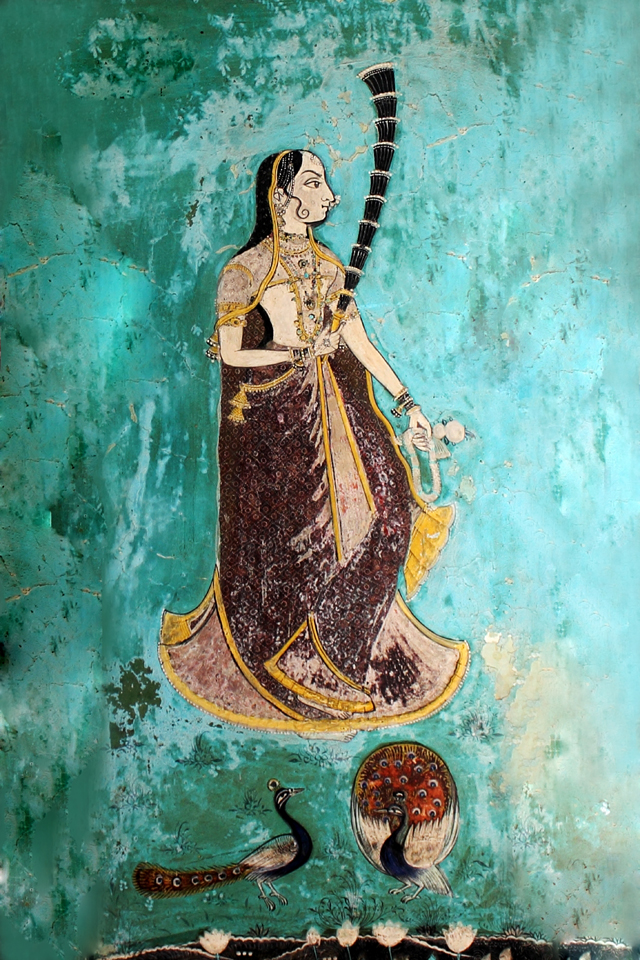

The important features of Ragini murals at Chitrasala are strong eyes, pointed chin, projected nose, round face, Jahangir style turban, narrow patka with geometrical designs, transparent chakadar jama, attractive black pompoms and shading under the armpits. Ragini Todi, Ragini Megha Mallar, and Ragini Asvari are important examples of this sect.
The depiction of zenana or women’s harem is yet the attraction of Chitrasala murals. Zenanas are large palaces built for women. These palaces are divided into different apartments allotted to the royal women or queens, less important ladies who hold various managerial positions and attendants. In these wings, only the kings and princes are allowed. Some common zenana scenes that appear in Chitarasala are princes playing chaupar, palace gardens, palace ponds, palace terraces, the celebration of Teez festival and women listening to music, feeding the fish and enjoying wine and smoking huqqua.






The love murals of Chitrasala are a treat to eyes. They follow shringar at all its spell and intensity – when the passion strikes a woman after seeing her lover she sweats and is thrilled with romance and such is the intensity of her involvement she does not see even her friend standing nearby. They integrate with the landscape of Bundi and the cycle of seasons. There are joy and delight everywhere.
Author – Jitu Mishra
He can be contacted at jitumisra@gmail.com










